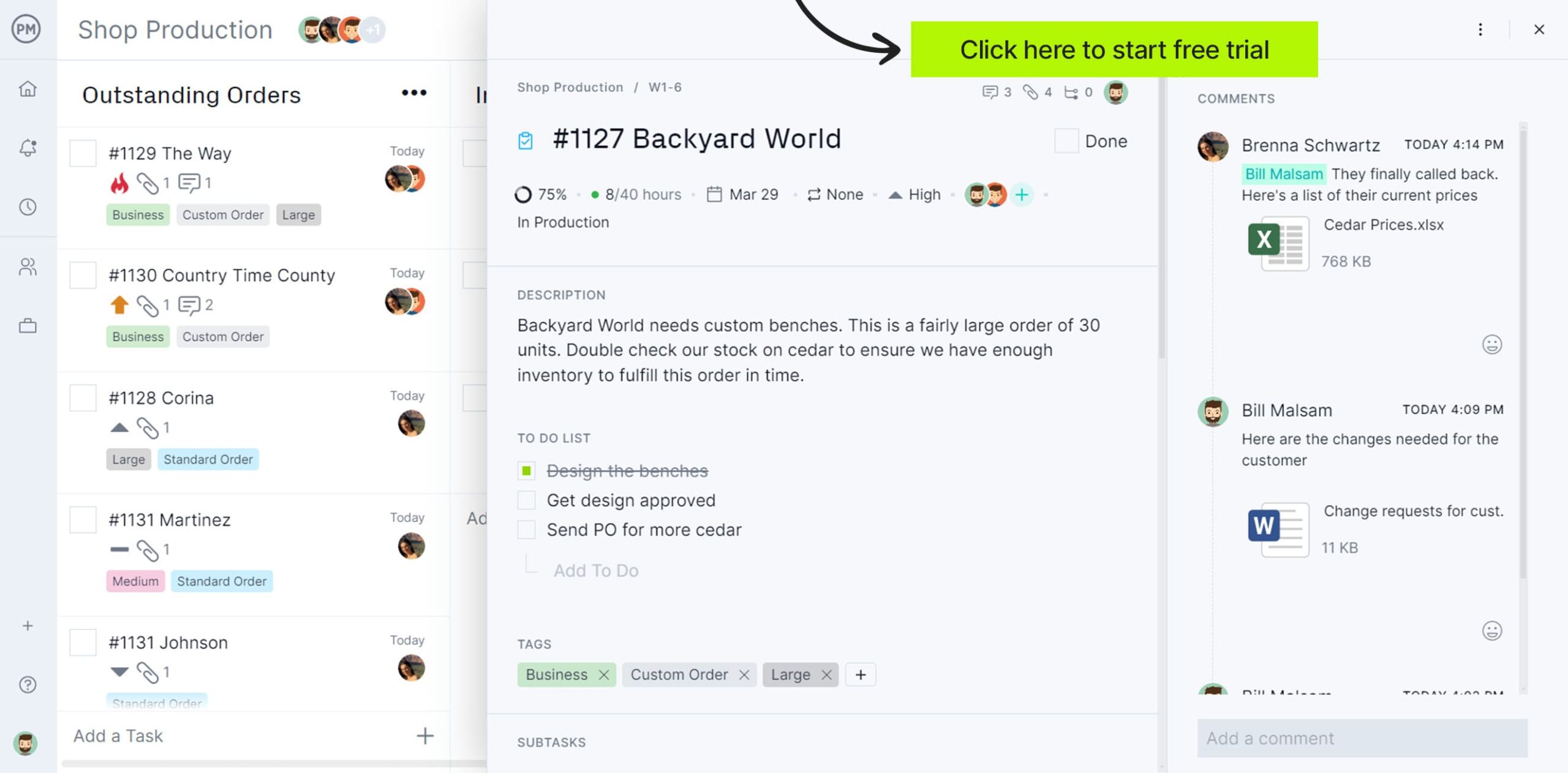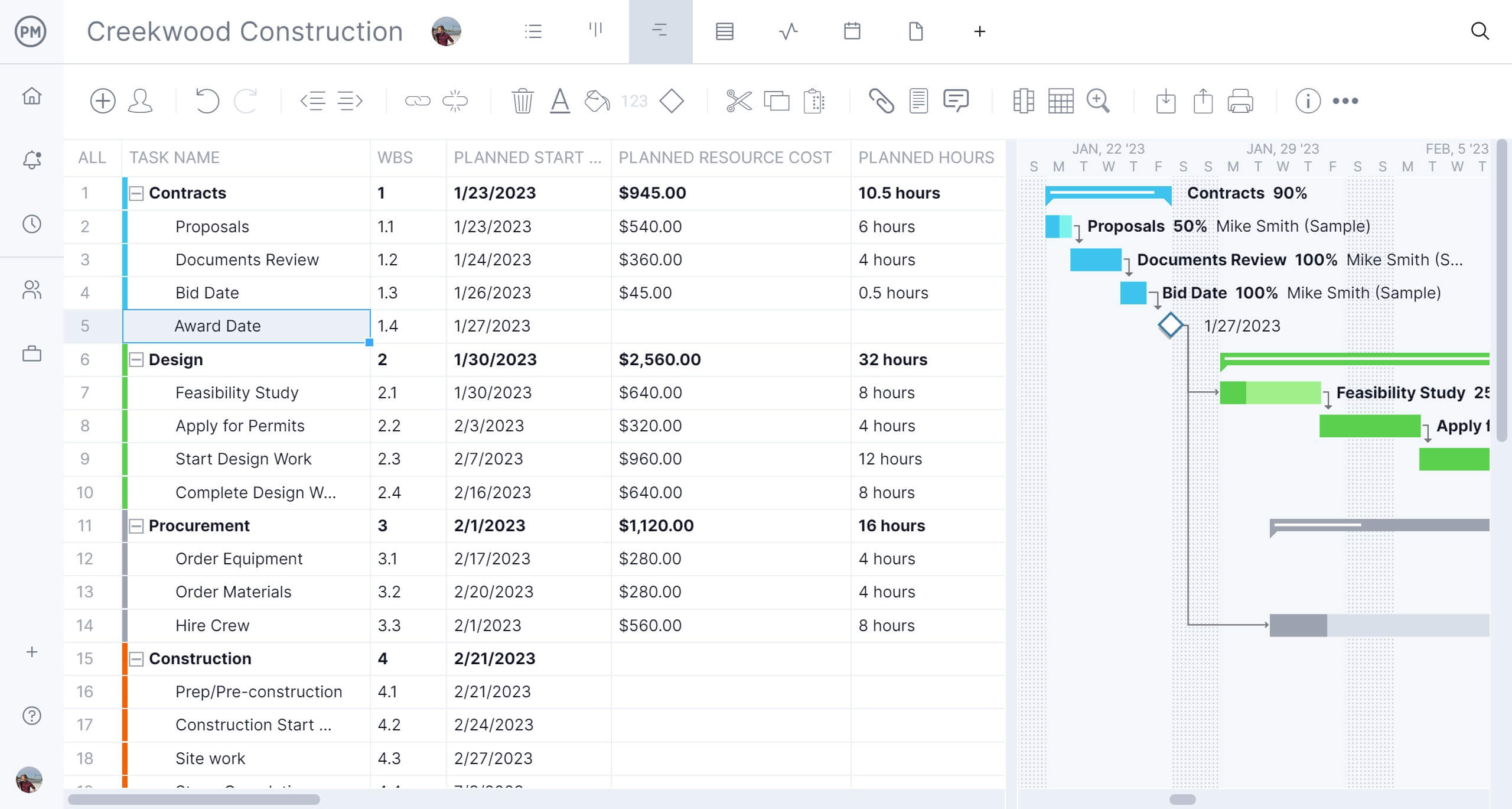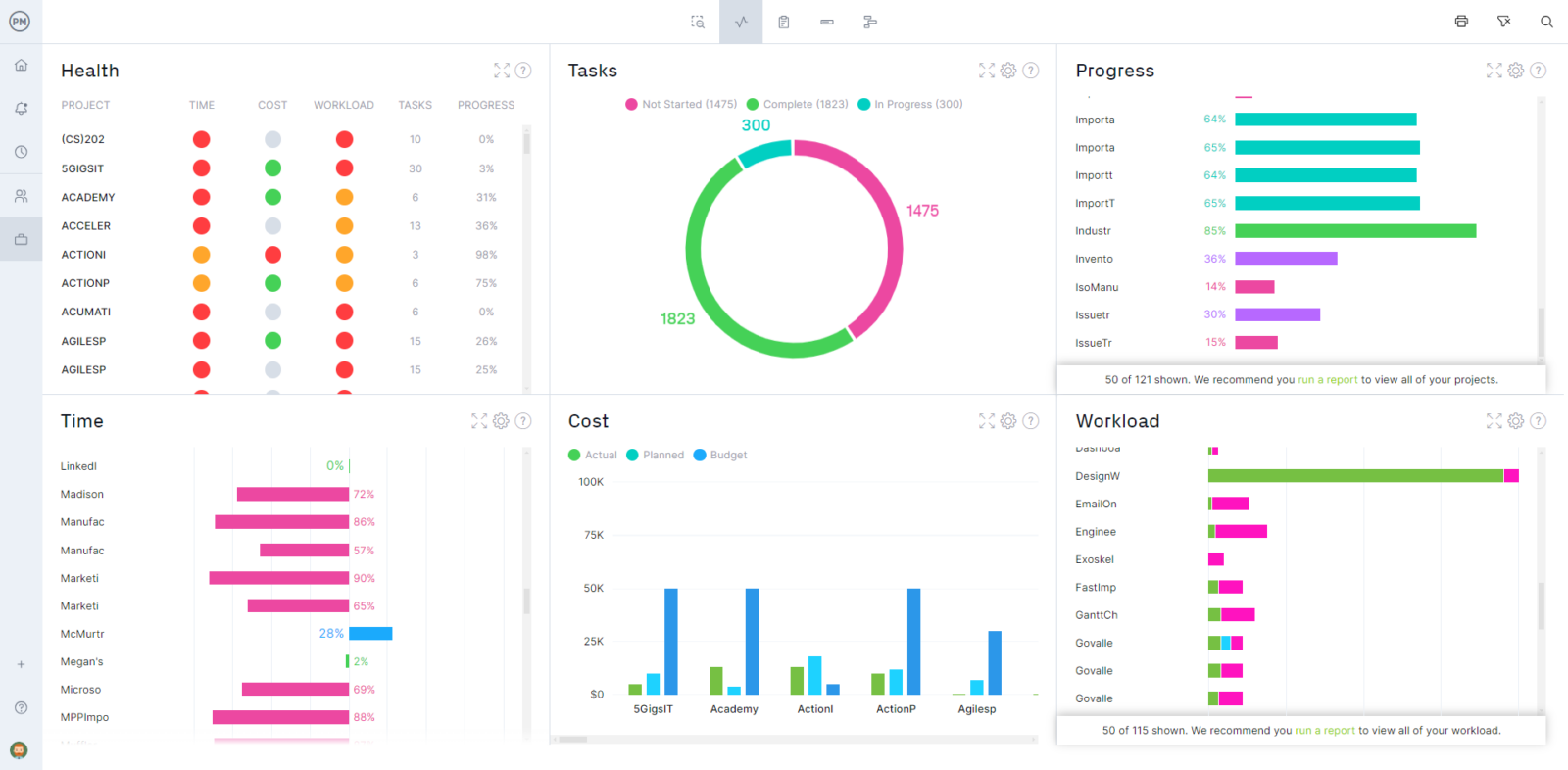More likely than not, you’ve created an action item without realizing it. If you’ve ever written a to-do list, you’ve made yourself a set of action items—errands to run, household chores to complete, people to contact, etc.
In project management, managing action items is a much more complicated process, and it calls for a sophisticated system of creating, assigning and tracking action items.
What Are Action Items?
Action items are small tasks that should be executed to achieve a larger, more complex objective, such as an action plan or simply a larger task. Creating a list of action items is the best way to assign these jobs and track progress.
Action items take many forms in project management, from activities that must be completed to events that must take place. Their defining characteristic, though, is that each item completed leads to the conclusion of a greater task.
While they may appear simple, creating a list of action items is more important than you might expect. Poorly created action items lists can slow down an entire project or even lead to total failure. For this reason, it’s essential to understand the best ways to create action items and use them to propel your project forward.

Get your free
Action Items Template
Use this free Action Items Template for Excel to manage your projects better.
When to Use Action Items
Action items provide direction on what tasks need to be completed and this decision usually follows a meeting or discussion. Here are some specific scenarios where an action items list can prove beneficial.
Project Management
Action items in project management help break large projects into small manageable tasks. Each action item has a task owner such as the project manager or team members who are working to handle various aspects of the project. An action item helps teams better understand what they should be working on and when to help keep the project on track and avoid delays.
Strategic Initiatives
Long-term strategic initiatives lend themselves well to action items as an overarching goal is broken into specific steps. Action item tracking helps define the steps needed to achieve the goal. For example, if a company wants to expand into a new market, action items could include coming up with a marketing campaign and establishing different distribution channels. These more specific steps help teams feel less overwhelmed by a long-term goal.
Projects or Business Meetings
Once a meeting comes to an end, an action plan is usually made. This is composed of action items that help follow through on ideas, decisions or plans talked about during the meeting. What was discussed in the project or business meeting can then be followed up on to ensure that the objectives are met. In this case, meeting action items can help improve accountability and team members and project managers can be assigned specific tasks and deadlines.
Related: Free Meeting Minutes Template
Business Process Improvement
Similar to the above, business process improvement consists of action items that help turn goals into specific steps. If a company wants to improve its operational efficiency, action items may consist of automating manual processes, retraining employees or updating software systems. From there, the action items are presented to a person or a team along with a deadline and measurable outcomes. As a result, everyone can organize and track their action items list to drive continuous improvement.
The 3 Ws of Action Items
Before we dive into the specifics of writing action items, let’s start with three key questions known as the 3 Ws of action items. These questions will help you get started with the main attributes of an action item.
- Who? It’s important to define who will be the task owner as they’re responsible for the execution of the action item.
- What? Any action item needs a description that clearly defines what will be done.
- When? All action items should be time-bound in order to be effective for task management.
Now that we’ve established these bare minimum requirements for action items from a task management perspective, let’s consider how detailed action items fit overall project planning.
Project management software is the best way to make a list of action items and actually execute your work as a team. With ProjectManager, you can collaborate on tasks in five different views, including Gantt charts, task lists and kanban boards to track progress with dashboards and even track your time. Get started today for free.

How to Write Action Items
Here are some elements project managers should keep in mind when writing action items. The more detailed your action items, the more they’ll help facilitate workload management and the execution of your project plan.
1. Define a Title and Tracking Number for your Action Items
This is the name of the action item – its simplest descriptor. Keep the title short, as you will write a description and expand on the details there. It is advisable to assign a tracking number to each item. This will simplify how you track and report on them, especially when dealing with many action items at once.
2. Define Expected Deliverables
Expected deliverables for action items may include who is responsible for the task, specific details on what needs to be done, due dates for each task, needed resources to complete the task, outcome metrics for measuring success and any needed documentation to summarize the results.
3. Establish a Priority Level for Each Action Item
When dealing with multiple items on your action plan, assign each a priority in order to know what to focus on first. Not all of them necessarily must be completed in the order they were assigned, and some will naturally be more pressing than others.
4. Set Due Dates for Action Items
There are three dates to keep in mind when creating action items: creation date, estimated completion date and eventual completion date. Note that not all will be completed and some may instead be “resolved.” These are items that have become unnecessary along the way and don’t need to be completed.
5. Assign a Task Owner for your Action Items
Include who created the action item as well as who they assigned it to. This makes it easier for anyone involved to know where to direct questions. Essentially, this is a way to speed up project communication.
6. Write a Short Description for Each Action Item
The description should expand on the title. Keep in mind that this should still be a simple description — a summation, not a step-by-step guide. Generally, action item descriptions are only a sentence or two.
7. Add a Section for Specific Details
Here you may include any other pertinent details the assignee needs to execute the task. Depending on the action item, this may not be necessary.
Action Items Template
Action items are a constant part of task management. They’re something team leads create and use throughout the life of any project. For this reason, your lists should be formatted in the same way and include the same information. This consistency cuts down on confusion and improves results.
As the assignee, you should know exactly what is expected of you no matter what you have been assigned or who assigned it. An action item template ensures all the information you need is there in a format you can understand.

Our action item template ensures that you include all the necessary details and format the lists the same way every time. In doing so, you won’t have to waste valuable time reacquainting yourself with a new format. You have the information you need, and you know where to find it.
How to Keep Track of Action Items
While it may seem straightforward, a large volume of actionable items can be overwhelming to track. Here are some tips on how to better keep track of action item tracking.
Set SMART Goals
SMART goals should be specific, measurable, achievable, relevant and time-bound. When action items are made alongside SMART goals, it’s easier to increase the likelihood of following through on each action item.
Establish Metrics and KPIs to Track Action Items
Accountability surrounding each action item such as metrics and KPIs can make team members more motivated to complete each item successfully.
Make an Action Items List
This is a document or tool that outlines tasks that must be completed. These lists help clarify responsibilities, track progress and guarantee accountability.
Use Project Management Software
Project management software allows teams to create, assign and track action items in one place. Teams can collaborate across project views to ensure there aren’t any roadblocks to completing each action item.
Action Item Examples
Imagine a project meeting in which a task list is being discussed, creating a project management office (PMO). This task must be completed before the project can move forward. In order to make this complex task more manageable, the project manager will break it into smaller action items.
Project task: Set up a project management office (PMO)
Action items:
- Choose a location for the PMO
- Choose software for the PMO
- Assemble a team for the PMO
These tasks are easier for team members to wrap their heads around and execute and easier for project managers to track. Here’s another example that applies to project managers. Creating a project schedule is a complex task that can be broken into multiple action items to facilitate its execution.
Project Task: Create a project schedule
Action items:
- Identify your available resources such as people, materials and equipment
- Create a work breakdown structure to define your project tasks
- Use project management software or other tools to create your schedule
These are just two simple action items examples to illustrate how they can be valuable in project management, but in reality, action items can be used for many purposes such as operations management or manufacturing.
Benefits of Using Action Items
Here are some of the main benefits of using action items for project management.
- Turn project meetings into action: Creating action items based on the takeaways from your project meetings can be very beneficial for your organization. For example, you can use your meeting minutes to create action items to take action right away.
- Help with workload management: Action items are easy to track using project management tools, which allows project managers to know what their team members are working on.
- Increase employee accountability: As stated above, action items have an owner, priority level and deadlines, which creates a sense of accountability in employees.
- Facilitate project tracking: Action items are specific, small tasks that help dig into task management details. This means project managers can track their projects very accurately and share project progress with stakeholders.
What Is Action Item Tracking?
After writing action items, execution and tracking begin. As these are worked on, you should track and record their progress in order to inform decisions and strategies. When done correctly, tracking should reveal where to tweak task management strategies in the future.
Action item tracking is the process of monitoring an action item from start to finish and recording the information. This information can be easily referred back to and even inform future decisions.
Tracking is especially important after a project is completed. Without it, useful information about how an action item was handled is essentially wasted. Ideally, this information will be saved and used at a later date.
The two most commonly used methods for action items tracking are action items lists and project management tools like Gantt charts, task lists and kanban boards.
The Purpose of an Action Item List
A rolling action item list is a good way to track everyone’s responsibilities during the project. This makes it easier to find answers to any questions you might have in the future. An action item list shows exactly what went right and what went wrong during a project, as well as how much effort and resources certain tasks required.
Things to Consider When Creating an Action Items List
There are five details you should always include to make sure the item is understood and can be tracked:
- The name of the task
- The important dates – creation, planned completion, actual completion
- The description of the action item
- The risks or issues to look out for
- Who will own the action item
How to Make an Action Item List
As you begin writing, there are a few best practices to keep in mind.
1. Begin With a Verb
When action items are written as nouns, odds are, they’re too broad. This can lead to confusion. For example, titling an action item “proofread investor emails” vs. “investor emails” gives a clearer idea of exactly what needs to be done.
2. Be Concise
Action items should make things simpler, not more complicated. If they are too “wordy” or contain unnecessary detail, they can confuse the assignee and slow things down. Less is more.
3. Write So Anyone Can Understand
Action items will always make sense to whoever created them, but consider if they’ll make as much sense to a first-time reader. The assignee should know exactly what to do.
4. Keep Resources in Mind
As you create an action item, consider the required resources like budget, labor and time. These resources may impact who you assign it to and what other items you assign them.
5. Anticipate Resulting Action Items
Successfully completing one job can unlock the door to another. When you anticipate these additional jobs ahead of time, you’ll be a step ahead.
Tracking Action Items with ProjectManager
ProjectManager is an award-winning tool that allows you to organize, execute, track and report on your action item lists with a greater degree of productivity.
List Action Items on Different Project Views
A simple spreadsheet can get the job done, but its static nature can be limited. With our software, you map your action items on online Gantt charts, task list or kanban board. Every project view easily allows you to assign action items and track the progress from concept to completion.

Track Action Item Status on Dashboards
To track the progress and performance of the assignee, you can use the real-time dashboard, which feeds real-time data from each of your team members and converts it into graphs and charts that display metrics such as time, variance and more.

Collaborate With Your Team with Cloud-Based Software
With our collaborative platform, team members can collaborate and tackle work in a more effective manner. Users can attach files and images, comment and tag people to ensure that everyone is on the same page.
ProjectManager is an award-winning project management solution that takes your project every step of the way. Online planning tools and web-based task management features let you collaborate on the go and make adjustments throughout the project. Then, create comprehensive reports from the data with only a few clicks. See for yourself by taking this free 30-day trial today.

